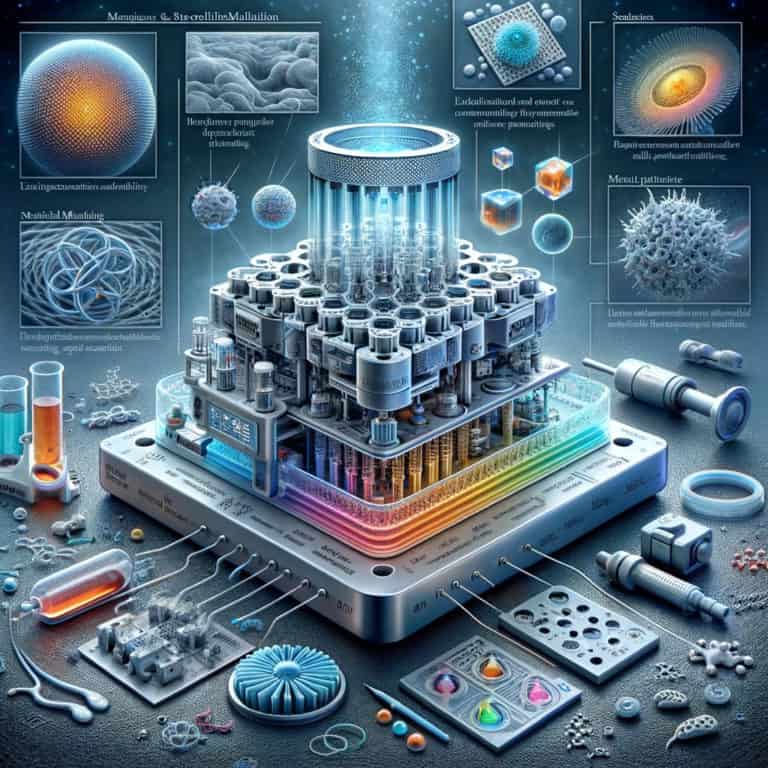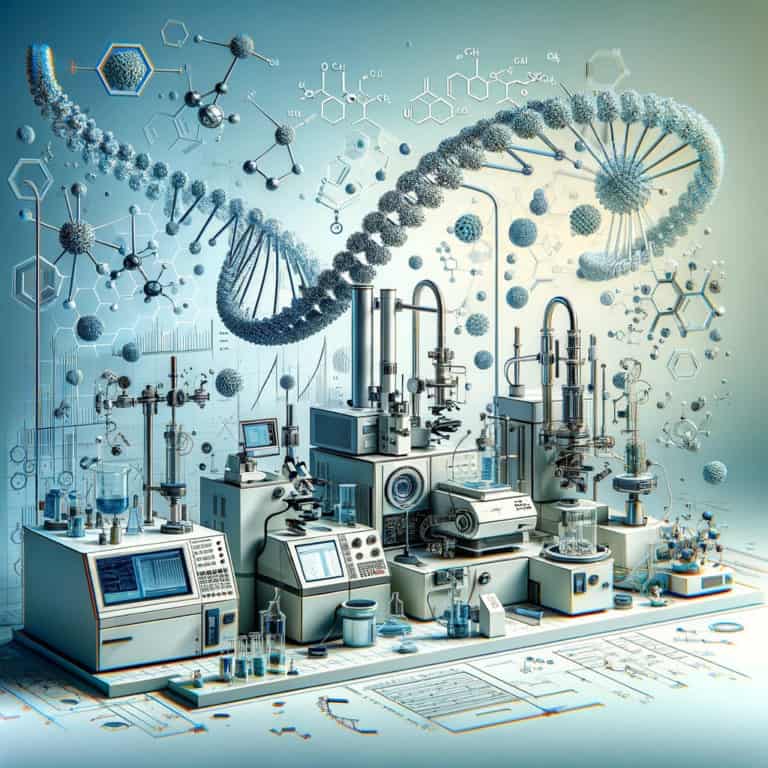Advancing Chemical Analysis: Innovations in Mass Spectrometry Techniques
This review investigates the function of mass spectrometry in chemical analysis, with an emphasis on current advances in techniques such as MALDI and ESI, as well as crucial applications in pharmacology and environmental investigations.

Introduction to Mass Spectrometry
Mass spectrometry is a potent analytical technique used extensively in chemical analysis (Schalley, 2002). It entails ionizing chemical substances to produce charged molecules or fragments, which are then sorted according to their mass-to-charge ratio (“Mass spectrometry: principles and applications”, 1997). This separation concept enables the identification and quantification of chemicals in a sample (Schalley 2002). Mass spectrometry offers a wide range of applications, including proteomics research (Gomes & Yates, 2019), environmental monitoring (Ketola et al., 2002), lipidomics (Schwudke et al., 2011), and field investigation of pollutants in air and water (Etzkorn et al., 2009).
Mass spectrometry’s capabilities are enhanced when coupled with techniques such as capillary electrophoresis, which provides exact mass information and allows for molecular characterization via fragmentation (Stolz et al., 2018). Furthermore, advances in ion mobility-mass spectrometry have increased analytical options, notably for examining peptides, lipids, and other biomolecules (Kanu et al., 2008). Electrospray ionization mass spectrometry has proven useful in biochemistry, allowing for peptide identification and ladder sequencing (Perera et al., 2020).
Mass spectrometry is not only used in research but also in teaching, where students are introduced to its concepts and applications (Patrick, 2020). Furthermore, the technique has been used in environmental monitoring to identify volatile organic chemicals, semi-volatile organic compounds, and trace pollutants in air and water (Ketola et al., 2002; Etzkorn et al., 2009). Membrane introduction mass spectrometry (MIMS) has developed as a viable tool for real-time environmental monitoring due to its ease of use, speed, and sensitivity.
Mass spectrometry is an important tool in many scientific domains since it allows for exact examination and characterization of substances. Its versatility and sensitivity make it essential for research, education, and environmental monitoring, emphasizing its importance in modern analytical chemistry.
Techniques and Instrumentation
Matrix-assisted laser desorption/ionization (MALDI), electrospray ionization (ESI), and gas chromatography-mass spectrometry (GC-MS) are important mass spectrometry techniques with distinct ionization and detection methods that are appropriate for different sample types (Zaima et al., 2010; Chetwani et al., 2010; Li & Li, 2013).
MALDI uses a matrix to absorb laser energy to ionize analytes, making it appropriate for big macromolecules such as proteins and peptides due to its soft ionization process that reduces fragmentation (Zaima et al. 2010). ESI, on the other hand, creates ions by applying a high voltage to a liquid sample, making it ideal for examining biomolecules, polymers, and environmental samples with little fragmentation (Chetwani et al., 2010). GC-MS combines gas chromatography for separation with mass spectrometry for detection, making it useful for evaluating volatile and semi-volatile chemicals such as environmental contaminants and pharmaceuticals (Li & Li, 2013).
MALDI is very useful for biomolecular analysis, as demonstrated in proteomics and lipidomics studies (Zaima et al., 2010). ESI is recommended for biomolecule and environmental analysis because of its ability to ionize a wide range of substances with great sensitivity (Chetwani et al., 2010). GC-MS excels in analyzing volatile chemicals, making it useful for environmental monitoring and drug analysis (Li and Li, 2013).
MALDI, ESI, and GC-MS provide complimentary mass spectrometry capabilities, with each technique suited to distinct sample types depending on ionization and detection methods.
Applications of Mass Spectrometry
Mass spectrometry has had a substantial impact on many domains, including pharmacology, environmental studies, and proteomics, by making it easier to identify and quantify complex chemicals (Aebersold and Mann, 2003; Donnelly et al., 2019; Wilm & Mann, 1996). In pharmacology, mass spectrometry is critical for drug discovery and development because it allows for exact characterization of drug components and metabolites in biological materials (Wang et al., 2009). This method has proved useful in cancer biomarker discovery, identifying possible biomarkers for early detection and customized treatment regimens (Wang et al., 2009).
In environmental analysis, mass spectrometry is widely used to detect and quantify pollutants, pesticides, and other contaminants in air, water, and soil. Researchers can precisely identify and measure lipids by combining mass spectrometry with different ionization sources such as electrospray ionization (ESI) and atmospheric pressure chemical ionization (APCI), offering insights into lipid metabolism and lipidomics (Khoury et al., 2018).
Mass spectrometry is heavily used in proteomics research to identify and quantify proteins (Aebersold & Mann, 2003; Donnelly et al., 2019). Top-down proteomics techniques have proven critical in finding disease-relevant changes in protein levels, paving the path for personalized treatment approaches (Donnelly et al., 2019). Mass spectrometry has also been used to characterize microbial activity at the molecular level in environmental proteomics investigations, offering light on the roles of microbial proteins in varied environments (Keller & Hettich, 2009).
Overall, mass spectrometry has become an essential tool in a variety of scientific disciplines, providing exceptional capabilities for detecting and quantifying complex compounds, consequently improving research in pharmacology, environmental study, and proteomics.
Reference
(1997). Mass spectrometry: principles and applications. Choice Reviews Online, 35(03), 35-1527-35-1527. https://doi.org/10.5860/choice.35-1527
Aebersold, R. and Mann, M. (2003). Mass spectrometry-based proteomics. Nature, 422(6928), 198-207. https://doi.org/10.1038/nature01511
Chetwani, N., Cassou, C., Go, D., & Chang, H. (2010). High-frequency ac electrospray ionization source for mass spectrometry of biomolecules. Journal of the American Society for Mass Spectrometry, 21(11), 1852-1856. https://doi.org/10.1016/j.jasms.2010.06.023
Donnelly, D., Rawlins, C., DeHart, C., Fornelli, L., Schachner, L., Lin, Z., … & Agar, J. (2019). Best practices and benchmarks for intact protein analysis for top-down mass spectrometry. Nature Chemical Biology, 16(7), 587-594. https://doi.org/10.1038/s41592-019-0457-0
Etzkorn, J., Davey, N., Thompson, A., Creba, A., LeBlanc, C., Simpson, C., … & Gill, C. (2009). The use of mims-ms-ms in field locations as an on-line quantitative environmental monitoring technique for trace contaminants in air and water. Journal of Chromatographic Science, 47(1), 57-66. https://doi.org/10.1093/chromsci/47.1.57
Gomes, F. and Yates, J. (2019). Recent trends of capillary electrophoresis‐mass spectrometry in proteomics research. Mass Spectrometry Reviews, 38(6), 445-460. https://doi.org/10.1002/mas.21599
Kanu, A., Dwivedi, P., Tam, M., Matz, L., & Hill, H. (2008). Ion mobility–mass spectrometry. Biological Mass Spectrometry, 43(1), 1-22. https://doi.org/10.1002/jms.1383
Keller, M. and Hettich, R. (2009). Environmental proteomics: a paradigm shift in characterizing microbial activities at the molecular level. Microbiology and Molecular Biology Reviews, 73(1), 62-70. https://doi.org/10.1128/mmbr.00028-08
Ketola, R., Kotiaho, T., Cisper, M., & Allen, T. (2002). Environmental applications of membrane introduction mass spectrometry. Biological Mass Spectrometry, 37(5), 457-476. https://doi.org/10.1002/jms.327
Khoury, S., Canlet, C., Lacroix, M., Berdeaux, O., Jouhet, J., & Bertrand‐Michel, J. (2018). Quantification of lipids: model, reality, and compromise. Biomolecules, 8(4), 174. https://doi.org/10.3390/biom8040174
Li, Z. and Li, L. (2013). Chemical-vapor-assisted electrospray ionization for increasing analyte signals in electrospray ionization mass spectrometry. Analytical Chemistry, 86(1), 331-335. https://doi.org/10.1021/ac4036263
Patrick, A. (2020). Instructor’s reference for integrating mass spectrometry into the general chemistry classroom. Journal of Chemical Education, 97(10), 3595-3602. https://doi.org/10.1021/acs.jchemed.0c00603
Perera, V., Acharya, B., Patrick, A., & Mlsna, D. (2020). Hands-on electrospray ionization mass spectrometry for undergraduate biochemistry students: peptide identification by ladder sequencing. Journal of Chemical Education, 97(5), 1437-1442. https://doi.org/10.1021/acs.jchemed.9b00800
Schalley, C. (2002). Mass spectrometry—principles and applications. International Journal of Mass Spectrometry, 214(1), 173. https://doi.org/10.1016/s1387-3806(01)00557-7
Schwudke, D., Schuhmann, K., Herzog, R., Bornstein, S., & Shevchenko, A. (2011). Shotgun lipidomics on high resolution mass spectrometers. Cold Spring Harbor Perspectives in Biology, 3(9), a004614-a004614. https://doi.org/10.1101/cshperspect.a004614
Stolz, A., Jooß, K., Höcker, O., Römer, J., Schlecht, J., & Neusüß, C. (2018). Recent advances in capillary electrophoresis‐mass spectrometry: instrumentation, methodology and applications. Electrophoresis, 40(1), 79-112. https://doi.org/10.1002/elps.201800331
Wang, P., Whiteaker, J., & Paulovich, A. (2009). The evolving role of mass spectrometry in cancer biomarker discovery. Cancer Biology & Therapy, 8(12), 1083-1094. https://doi.org/10.4161/cbt.8.12.8634
Wilm, M. and Mann, M. (1996). Analytical properties of the nanoelectrospray ion source. Analytical Chemistry, 68(1), 1-8. https://doi.org/10.1021/ac9509519
Zaima, N., Hayasaka, T., Goto‐Inoue, N., & Setou, M. (2010). Matrix-assisted laser desorption/ionization imaging mass spectrometry. International Journal of Molecular Sciences, 11(12), 5040-5055. https://doi.org/10.3390/ijms11125040



